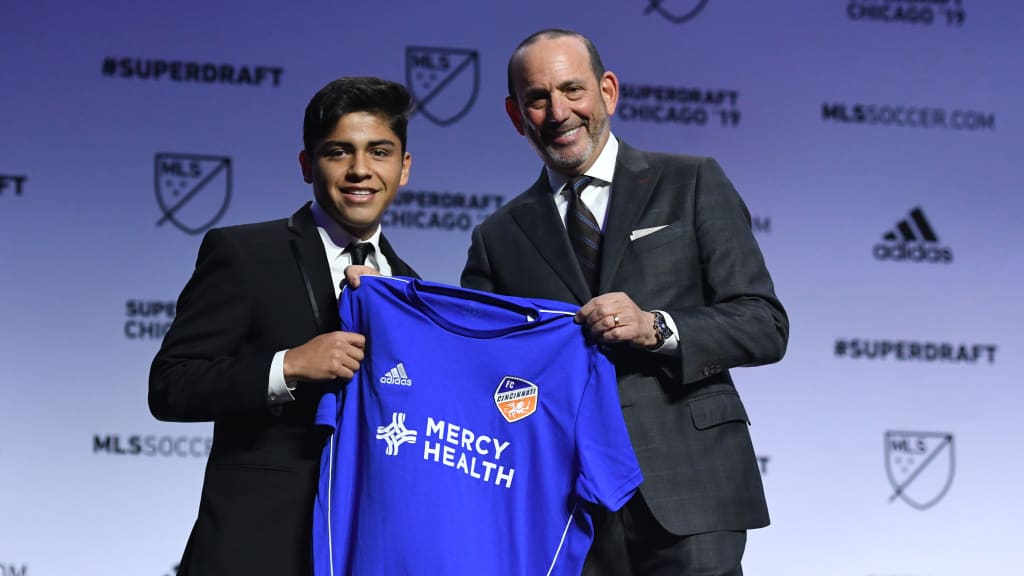Once a main pipeline for new players to enter the league, the MLS SuperDraft has lost its relevance over the years as new pathways have opened up both domestically and internationally.
The MLS SuperDraft has long been one of many features that have separated the league from the rest of the footballing world. While many successful players have come through the draft process, as the level of MLS rises, many are questioning if the SuperDraft still has a place in the league’s ecosystem.
Sure, Jack Harrison, Jozy Altidore, Michael Bradley, and many more MLS stars have come from the draft, but more recently, the majority of drafted players haven’t reached such heights and actually may have ended up being more limited in their future options at an MLS level.
When an MLS team drafts a player, it gains the right to negotiate a contract with the selected player. If the club and the player cannot reach an agreement, the MLS club that made the selection holds the rights to that player for two years. If another MLS club wants to sign said player, it would need to trade with the rights-holding team for the opportunity to negotiate with the player.
For many MLS teams, trading any asset for an unproven college player is borderline unheard of. This is why you see so many players who are drafted in the MLS SuperDraft ending up in the USL or other lower tier leagues instead of finding spots that they would have perhaps been talented enough for on other MLS rosters.
An example that comes to mind is Canadian Premier League center back Daniel Nimick. A second-round draft pick to the Vancouver Whitecaps in 2022, Nimick didn’t sign with the club, and eventually found his footing with the HFX Wanderers, where he earned CPL Best XI honors in the 2023 season.
It’s hard to say for sure, but Nimick could’ve been a solid depth addition to Canadian MLS clubs Toronto FC or CF Montreal, who both struggled with center back depth throughout the season. However, the fact that either club would’ve had to offer something in return for Nimick’s rights is certainly enough motivation for them to look elsewhere and consider other options.
For a system that MLS hails as an opportunity for players in the college ranks, the SuperDraft seems more like a system that allows the league to limit the movement of talent and coerces players to potentially accept terms that they do not like or face the reality of playing in the lower leagues with less stability.
As a case study, let’s look at two MLS teams, Toronto FC and Columbus Crew — the teams who finished last and first, respectively, in the 2023 season — to see how their rosters were constructed.
Toronto FC had two players on their roster under the age of 30 who came through the draft: Luka Gavran and Aime Mabika. Neither were major contributors, as they had a combined 27 appearances in 2023. The rest of the Toronto roster comprised of academy products, international talent, or players who decided against the draft and signed direct homegrown contracts.
On the other hand, Columbus had a larger contribution from past draft picks, as its starting keeper Patrick Schulte came through the 2022 draft. However, he is just one of three MLS SuperDraft picks under 30 on the Crew’s MLS Cup-winning squad. Outside of these three players, the majority of the Crew’s depth pieces came directly from MLS academies, whether that be the Crew academy or trades with other clubs to sign talent that the Crew felt had a cultural fit as well as the technical potential to blossom into key pieces of an MLS organization.
So what can we conclude from this cursory study? The draft isn’t bringing consistent success for players or clubs. Instead, it is more of a last-chance opportunity for players who need more time to develop at the college level. As always, MLS and its convoluted rules can and should be adjusted for the betterment of the league, as well as the players who are purely trying to gain the best possible chance of having a career in pro soccer.

One potential change is that when a player is drafted, their rights should not be automatically owned by a club. Yes, they should have the first right, but instead, they could pay the player a fee if they want to retain the player’s rights without signing them to a full contract. This way, the players can choose whether they want to test themselves on the open MLS market or take payment from the club and seek out opportunities outside of MLS.
Alternatively, MLS could implement standard contracts that are automatically offered to players once they are drafted. No negotiation, yes or no. If the player rejects the contract, rights are retained by the organization. At least in this case, when a player chooses to declare for the draft, they know what situation they’ll be in if if they are drafted.
Meanwhile, the teams can choose to pass on a draft pick if they do not want anyone who is available. This reduces how many players would be stuck with a singular team when it comes to fighting for contracts, while the clubs would also have more flexibility in terms of their recruitment strategy (i.e., not drafting for the sake of drafting).
Finally, suppose MLS wants to go away from the draft completely. In that case, it can implement a separate draft specifically for MLS NextPro sides, therefore having some control but having a significantly smaller investment attached to each pick. While NextPro sides are connected to MLS squads, these contracts could be specifically for the NextPro sides, therefore allowing other MLS teams to offer full contracts if they think the player is worth the financial outlay.
While I love that collegiate players are getting shine, it is time for an evolution on the system that was implemented decades ago. Drafts work best for leagues where they are at the pinnacle of their sport, but unfortunately, MLS isn’t the best league in the world, and the NCAA isn’t the best training ground for players.








